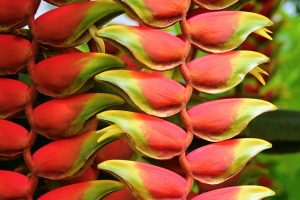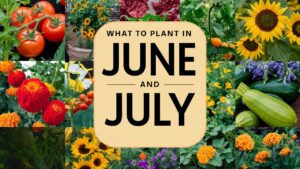Planting in USDA Zone 5 during July may seem limited, but it offers a great opportunity for gardeners to expand their growing horizons. With the warm summer temperatures, you can still plant various crops, flowers, herbs, and landscape plants that will flourish and provide beauty and bounty.
Vegetables To Plant
Bush Beans
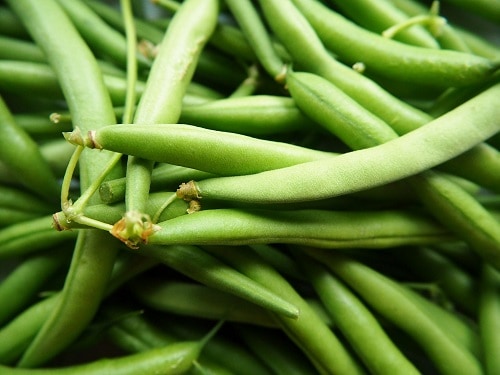
Bush beans are a warm-season crop that thrives in the summer heat. When planted in July, they benefit from the long growing days, and they’ll often yield before the first frost. Sow seeds directly into your garden soil about 1-1.5 inches deep and 3-4 inches apart. They require temperatures above 70°F for optimal germination. Bush beans generally mature in 50-60 days, making them a quick turnaround crop for late planting.
Cucumbers
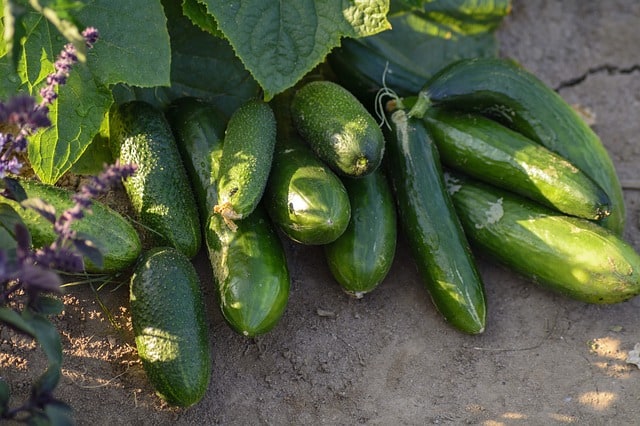
Cucumbers are one of the most refreshing summer vegetables. They can be planted in July as long as soil temperatures exceed 60°F. Plant seeds about 1 inch deep and space them 12–18 inches apart for optimal growth. Cucumbers appreciate full sunlight and well-drained soil. A harvest is typically ready within 50–70 days. If you aim for a fall harvest, choose fast-maturing varieties such as ‘Bush Champion’.
Kale

Kale is a hardy leafy green that can be sown in July for a fall harvest. It thrives in cooler temperatures, which means that planting in mid-summer, just before the temperatures begin to dip, is ideal. Plant seeds about ¼ inch deep in well-prepared soil with good drainage. Expect germination within 7–14 days. Kale can tolerate frosts and can remain in the garden until winter, providing fresh greens even after temperatures drop. Plus, the flavor often improves after exposure to cold weather.
Radishes
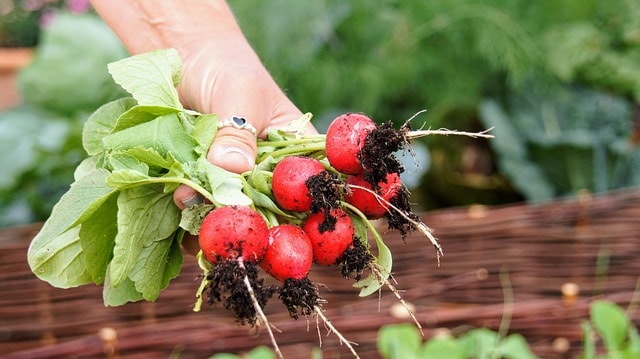
Radishes are among the fastest-growing vegetables, making them excellent for July planting. You can sow seeds directly into the ground about ½ inch deep and 1 inch apart. Radishes grown in the summer are typically harvested within 25–30 days. They enjoy full sun but can also thrive in partial shade if your garden is particularly hot. Consider quick-growing varieties like ‘Cherry Belle’ or ‘French Breakfast’ for a delightful crunch in your salads.
Carrots
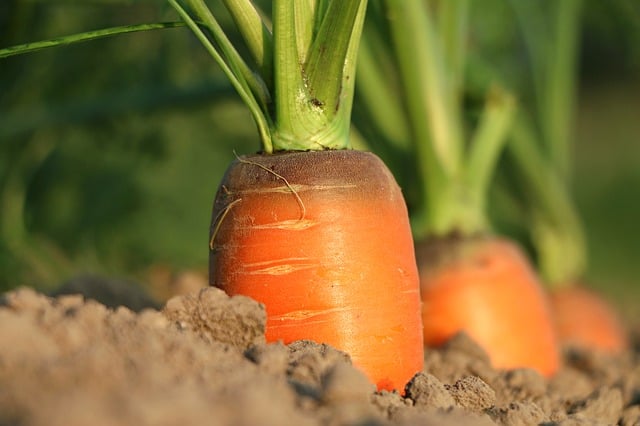
Planting carrots in July can yield a great harvest in the fall. Carrots prefer cooler temperatures for optimal growth, and they germinate best in loose, sandy soil kept moist with consistent watering. Sow seeds about 1/4 inch deep and 2–3 inches apart, thinning them once seedlings emerge. Typically, you’ll harvest carrots in about 60–80 days, so late July will afford you the time to get them ready before frost hits.
Zucchini
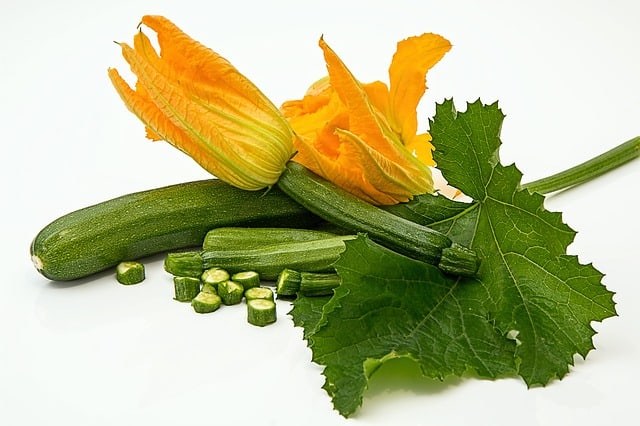
Zucchini is a prolific summer squash that you can sow directly into the soil in July. Plant seeds about 1 inch deep and 24–36 inches apart in full sun. Zucchini matures quickly, typically within 50–70 days, and a single plant can produce an impressive yield, making it a favorite among backyard gardeners. Ensure that you harvest regularly to encourage continued production.
Beets

Beets are another excellent vegetable choice for July planting. They do well in the cooler end of summer and can be sown 1/2 inch deep, spaced about 3 inches apart. Be sure to thin seedlings as they grow to ensure proper bulb development. Beets generally take 50–70 days to mature, and both the greens and the roots are edible, providing versatility in the kitchen.
Spinach
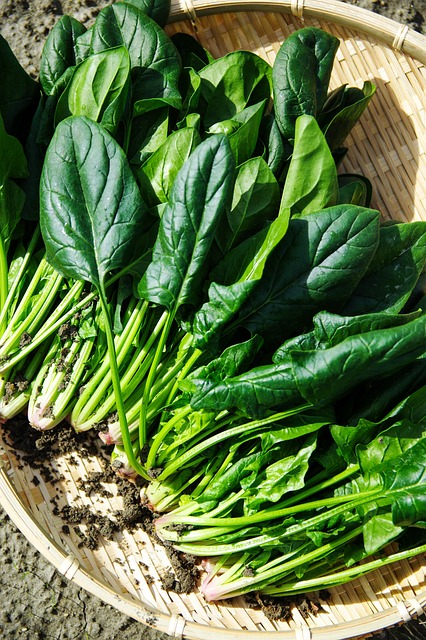
Spinach is a cool-season crop that performs exceptionally well when planted in July. You can sow seeds directly into well-prepared ground about 1/2 inch deep when soil temperatures remain around 60°F. Spinach germinates quickly, often within 7–10 days, and can be harvested in about 40–50 days. It loves consistent moisture, so keep the soil damp as the seeds establish.
Swiss Chard
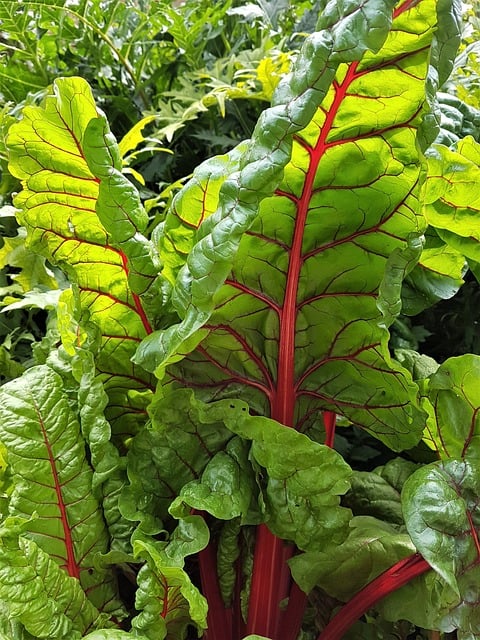
Planting Swiss chard in July allows for a continuous supply of fresh greens through the fall. The seeds should be sown about 1/2 inch deep and 3-4 inches apart. Swiss chard can tolerate heat and continues to thrive even as temperatures begin to cool. It will usually be ready for harvest in approximately 50–60 days. Both the leaves and stalks are edible, making it a versatile addition to your garden.
Turnips
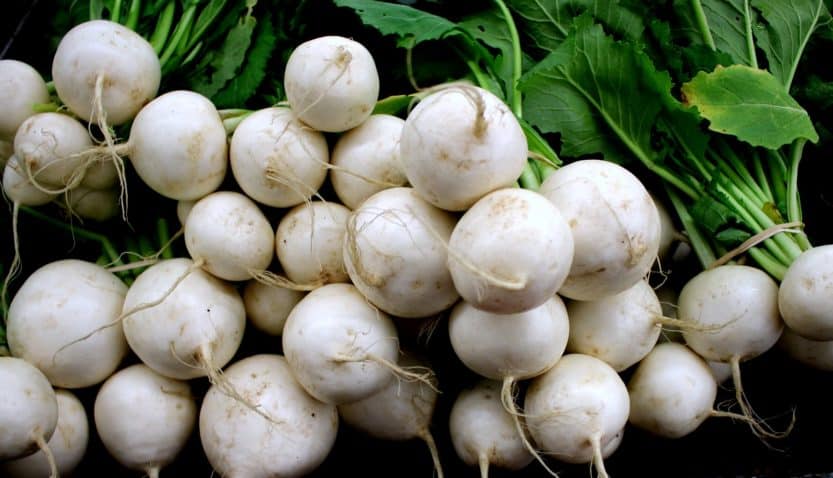
Turnips can be sown directly in July for a fall harvest. They require well-drained soil and a sunny location. Plant seeds about 1/2 inch deep and 2 inches apart. Turnips germinate within 7–14 days and take around 50–60 days to mature. Not only can you enjoy the flavors of the bulb, but the greens are also delicious and nutritious!
Flowers To Plant
Sunflowers

Sunflowers are iconic summer flowers that can be planted in July when the soil is warm, and conditions are right for robust growth. Sow seeds directly into the ground about 1 inch deep and 6 inches apart. Sunflowers thrive in full sunlight and require minimal care once established. They germinate in about 7–10 days and reach maturity around 70–100 days. Their vibrant blooms also attract pollinators and add a cheerful touch to any garden.
Zinnias

Zinnias are hardy and colorful summer annuals that you can sow directly into your garden in July. Plant seeds about 1/4–1/2 inch deep and thin them to 12 inches apart after germination. They flourish in full sunlight and well-drained soil and will bloom within 60–70 days. Zinnias are extremely low-maintenance, and their vibrant flowers will keep blooming until the first frost.
Marigolds
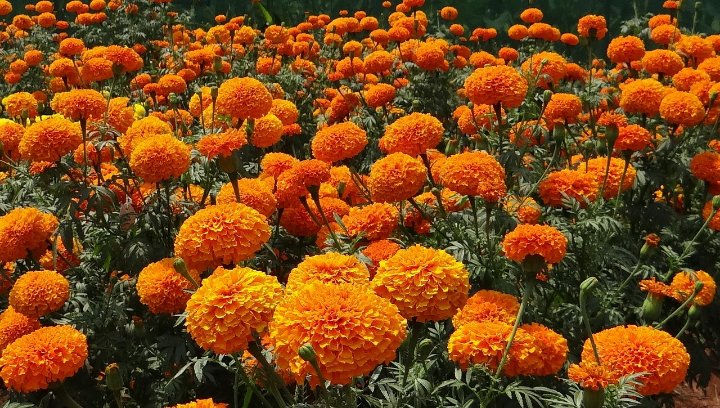
Marigolds are a fantastic choice for a July planting due to their ability to deter pests and their long-lasting blooming season. Plant them about 1/2 inch deep and 9–12 inches apart. They prefer well-drained soil and full sun. Marigolds typically bloom within 45–60 days post-planting. Their bright flowers make great companions in vegetable gardens, helping to enhance pollination and ward off unwanted insects.
Cosmos

Cosmos are bushy annuals with delicate, colorful blooms, making them a lovely addition to any garden. Plant seeds directly into the garden about 1/4 inch deep and space them about 12 inches apart. They thrive in sunny locations and are drought-resistant. Cosmos typically bloom from summer into fall and are easy to grow with little maintenance, often reaching full maturity in 70–90 days.
Coreopsis
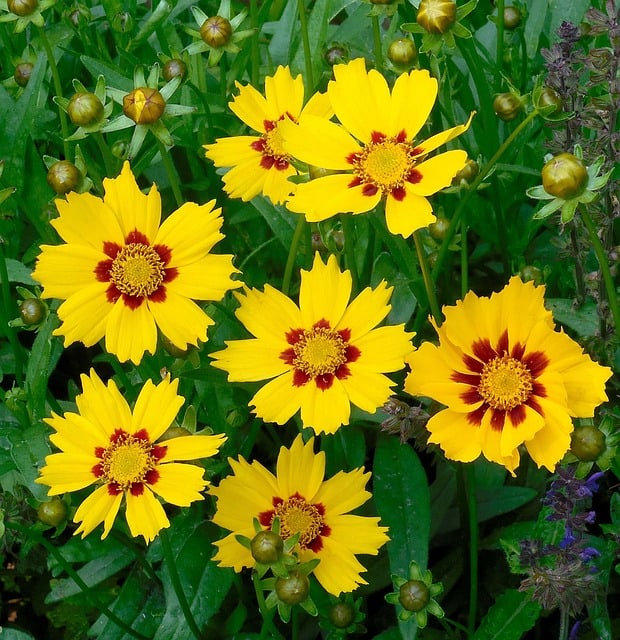
Coreopsis, also known as tickseed, can be planted in July for vibrant summer and fall blooms. Sow seeds directly into well-drained soil about 1/4 inch deep. This flower prefers full sun and can handle drought conditions once established. Coreopsis generally blooms within 60–80 days and continues to produce flowers until the first frost, attracting pollinators to your garden.
Asters
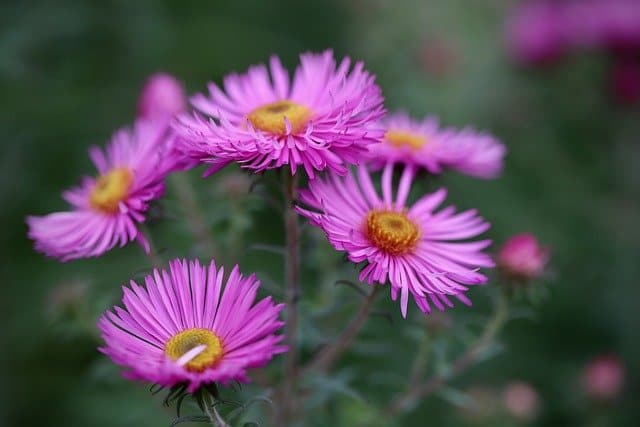
Asters are perennial flowers that can be planted as seeds in July for blooms the following spring and summer. While they won’t flower in the same season, you can start them early in the garden. Sow seeds about 1/4 inch deep in well-drained soil. They prefer full sun or partial shade and take about 90–120 days to reach maturity, often providing beautiful purple and blue hues.
Nasturtiums
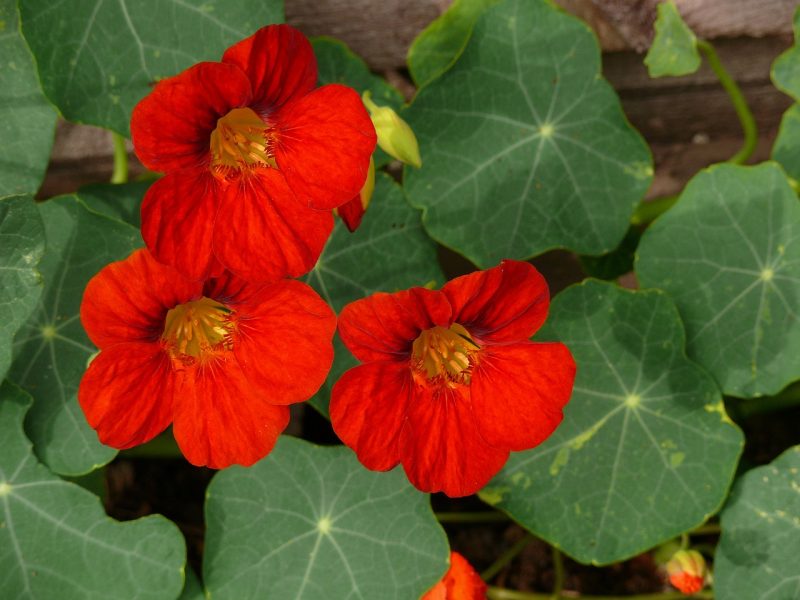
Nasturtiums are both beautiful and edible, making them a unique addition to your garden. They can be sown directly in July, around 1/2 inch deep into well-drained soil. Nasturtiums thrive in full sun and will bloom in about 50–60 days. Their vibrant orange and yellow flowers can be added to salads or used as a garnish, providing both beauty and a peppery flavor.
Salvia
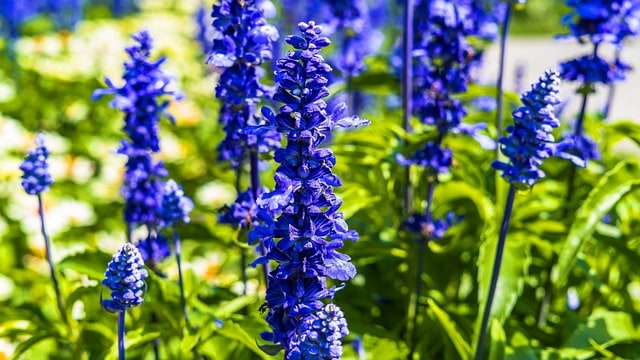
Salvia, also known as sage, is an excellent perennial choice that can be planted in July for future blooms. Once established, it offers vibrant blue, purple, or red flowers that attract pollinators. Plant salvia seeds about ¼ inch deep in well-drained soil; they prefer sunny areas. Though slower to mature, with a season of care, you can expect blooms in the following year, adding long-lasting interest to your garden.
Pansies
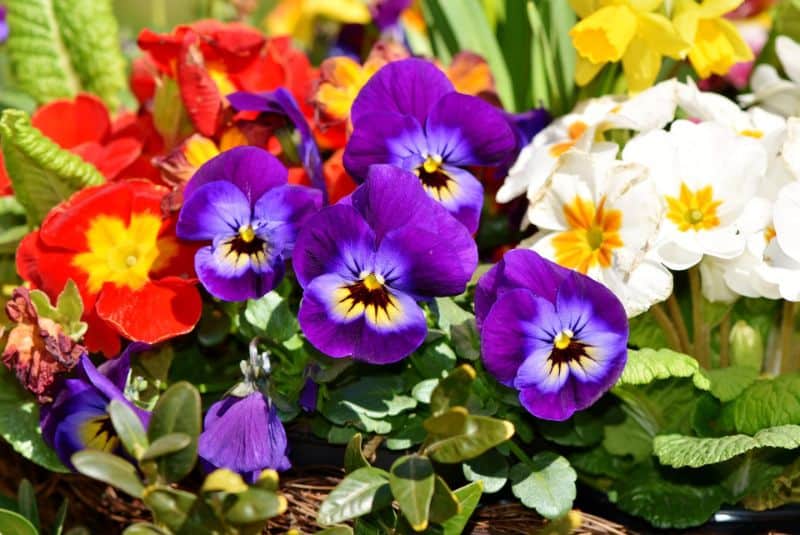
Pansies can also be planted as a biennial flower in July to establish roots before the cooler months. While they won’t flower until spring, sow your seeds about 1/4 inch deep in rich, well-drained soil for the best success when they bloom. Positioned in a sunny location, pansies flourish in cooler weather and are incredibly hardy, providing widespread and colorful blooms come spring.
Penstemons
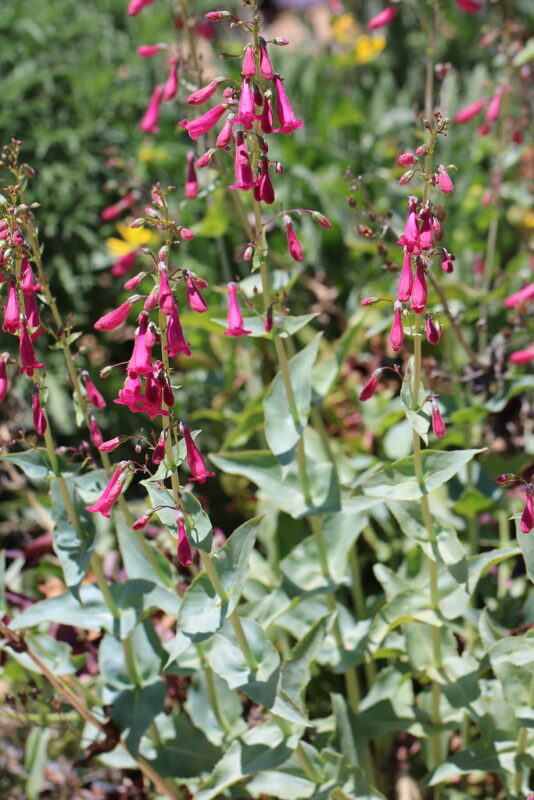
Penstemons have beautiful tubular flowers that attract hummingbirds and bees, making them a stellar choice for attracting wildlife to your garden. Plant seeds about 1/4 inch deep in well-drained soil in a sunny location. Typically, penal petals bloom in the following season, taking about 90–120 days to establish, rewarding you with vibrant blooms that can last all summer.
Herbs To Plant
Basil
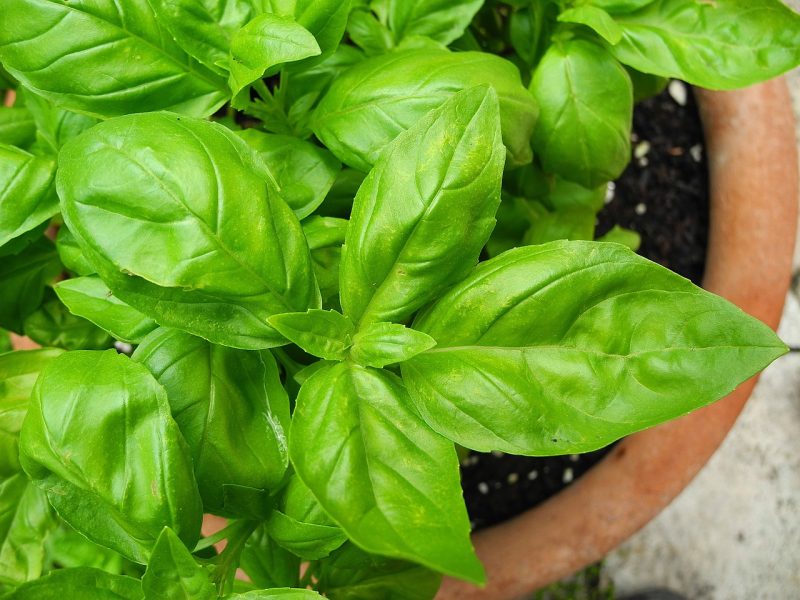
Basil is a tender herb that thrives in warm weather and can be planted in July when the risk of frost is long gone. Sow seeds about 1/4 inch deep in well-drained soil with plenty of sun. Basil grows quickly and is ready for harvesting within 60 days. It’s essential to pinch back flowers to encourage leafy growth and prevent bitterness. Basil can also be used fresh in salads, pasta, or sauces.
Dill
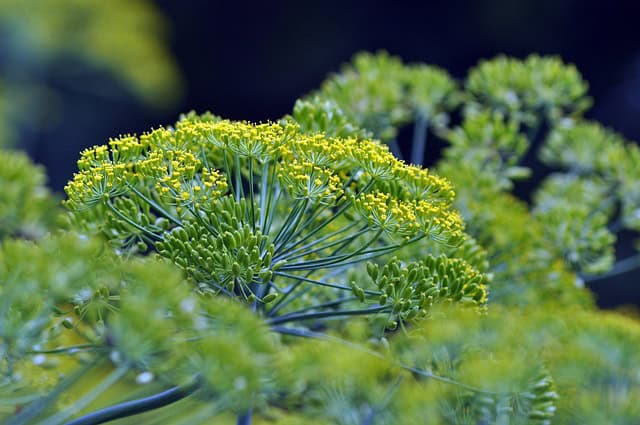
Dill, with its feathery foliage and flavor-enhancing qualities, can be another herb to sow in July. The seeds should be planted about 1/4 inch deep in fertile soil and require full sun and consistent moisture. Dill typically takes about 40–60 days to mature. It’s perfect for pickling and pairs well with fish and salads. It’s worth noting that dill tends to self-seed, providing you with new growth each year.
Cilantro
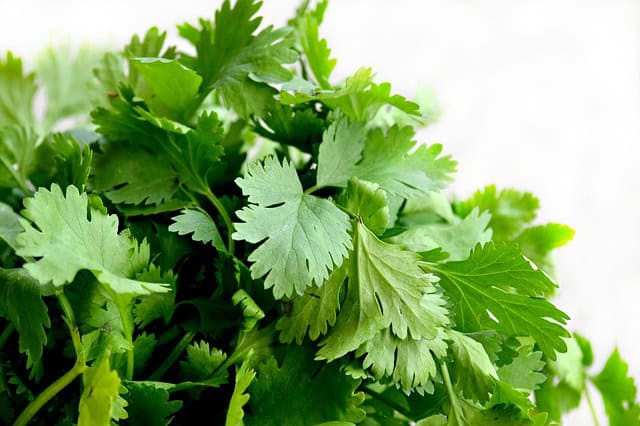
Cilantro can be planted in July, especially in areas where the temperatures are on the warmer side. Sow seeds about 1/4 inch deep in rich soil. Cilantro grows quickly and can be harvested in about 30 days for its leaves and 50 days for seeds (coriander). It prefers full sun but can thrive in partial shade in hotter climates.
Chives

Chives are perennial herbs that handle the summer sun well and can be sown in July to get a jump-start on next year’s growth. Sow seeds about 1/4 inch deep in well-drained soil with adequate sunlight. Chives are known for their delicate onion flavor and will be ready to harvest in about 60 days. They can be used fresh or dried, adding a unique flavor to a variety of dishes.
Oregano
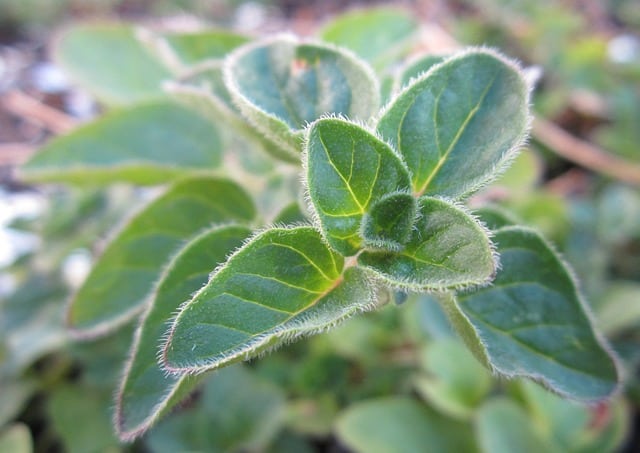
Oregano is another herb that can be started in July, either from seeds or transplants. It’s a perennial that thrives in hot summers and can be planted about 1/4 inch deep. Oregano prefers well-draining soil and full sun. The leaves can be harvested once the plant is around 6 inches tall, typically within 60 days. This aromatic herb is a staple in Mediterranean cuisine and pairs nicely with tomato-based dishes.
Thyme
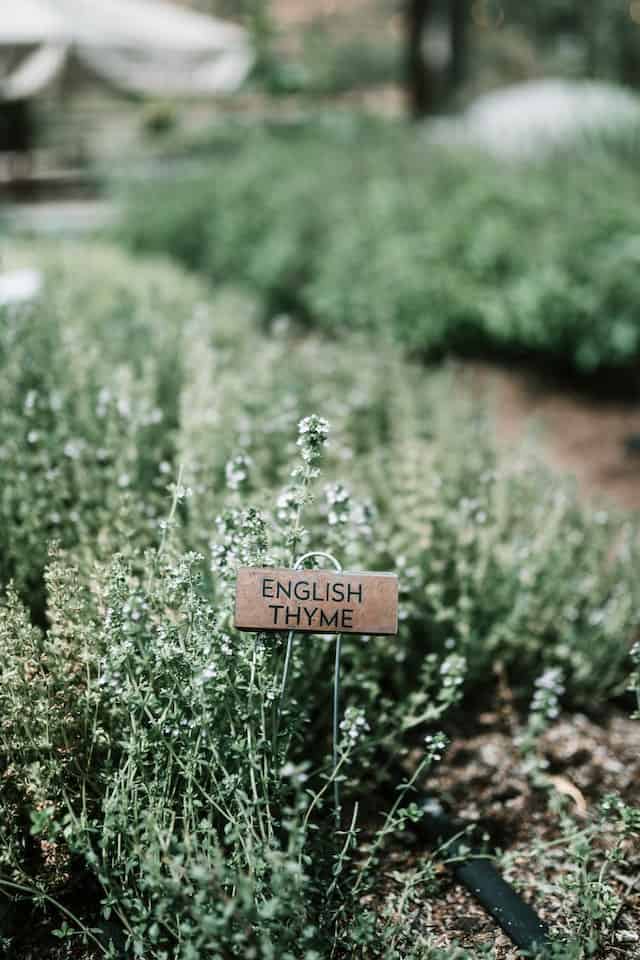
Thyme is a resilient perennial that can be planted in July for future culinary uses. Seeds should be sown about 1/4 inch deep in well-drained soil in a sunny location. Thyme does best with minimal watering, making it a low-maintenance herb. Usually ready for harvesting in about 60 days, it can be dried for later use or added fresh to soups and stews.
Parsley
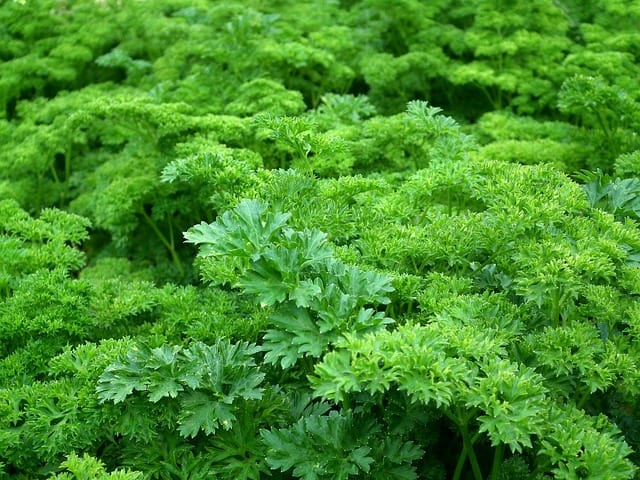
Parsley can also be sown in July for potential fall harvests or for overwintering. Plant seeds about 1/4 inch deep in rich, moist soil, preferably in partial shade, to prevent quick bolting during the heat. Parsley typically takes around 70–90 days to mature but can be harvested as baby greens when young. This versatile herb is widely used as a garnish and in cooking.
Fennel
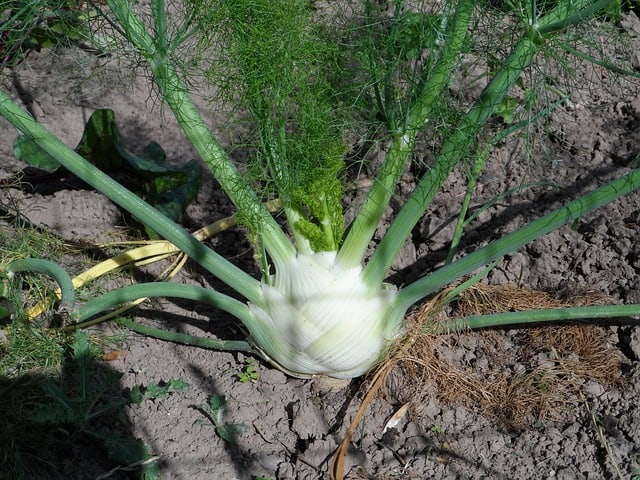
Fennel has a unique flavor that can enhance a variety of dishes. Plant seeds about 1/2 inch deep in a well-drained, sunny garden bed. Fennel prefers rich soil and regular watering. It requires approximately 80 days to mature, and both the bulb and fronds are edible, lending a lovely anise flavor to salads, soups, and various entrees.
Lemon Balm

Lemon balm is a hardy perennial herb that can be propagated in July. Sow seeds about 1/4 inch deep in well-drained soil and ensure they receive plenty of photons. Lemon balm has a delightful lemon scent and can be harvested in about 90–100 days. It’s great for making tea or adding to salads, and its fragrance is also wonderful for companion planting to deter pests.
Mint
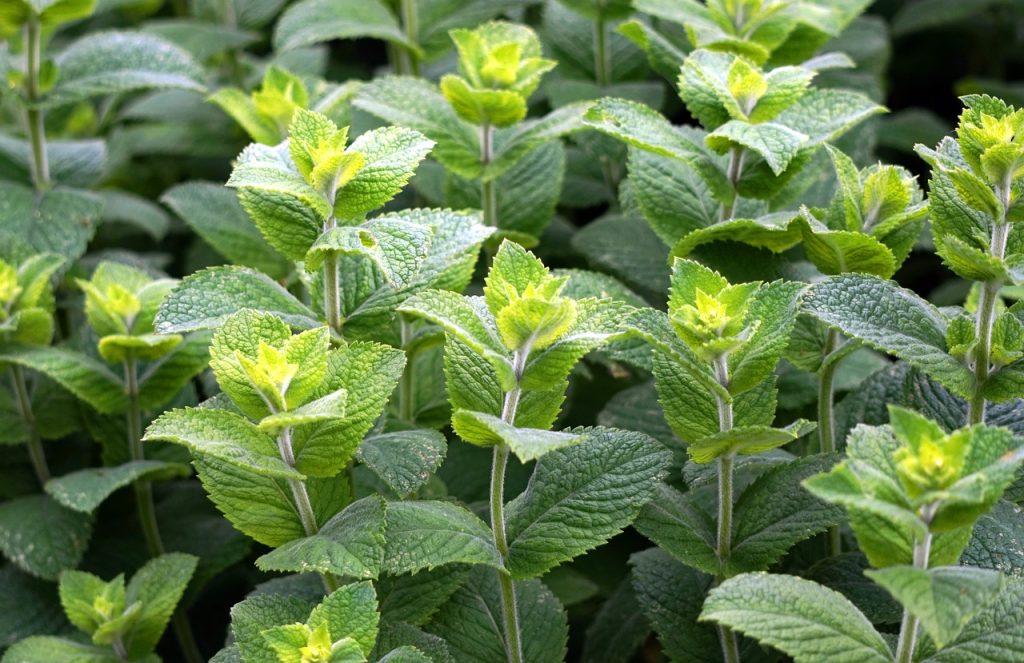
Mint is another herb that can be planted in July; however, it often spreads aggressively, so it’s wise to plant it in a container to prevent it from taking over your garden. Plant the seeds about 1/4 inch deep in nutrient-rich soil. Mint prefers partial shade and can be harvested within 70 days. It’s an excellent addition to drinks like mojitos or for enhancing the flavor of sweet and savory dishes alike.
Landscape Plants To Plant
Daylilies
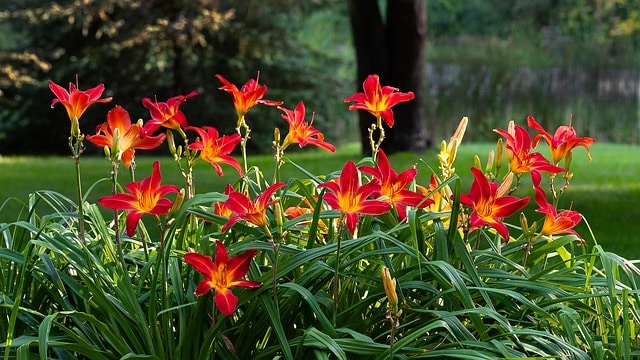
Daylilies are hardy perennials that are perfect for planting in July. They can tolerate various soil types and thrive best in well-drained soil and full sun. Planting them deep at about 1-2 inches above the root crown will allow them to establish well. Daylilies typically bloom in late spring to summer and can continue to provide beauty year after year. They there are numerous cultivars, offering a variety of colors and bloom periods.
Hostas
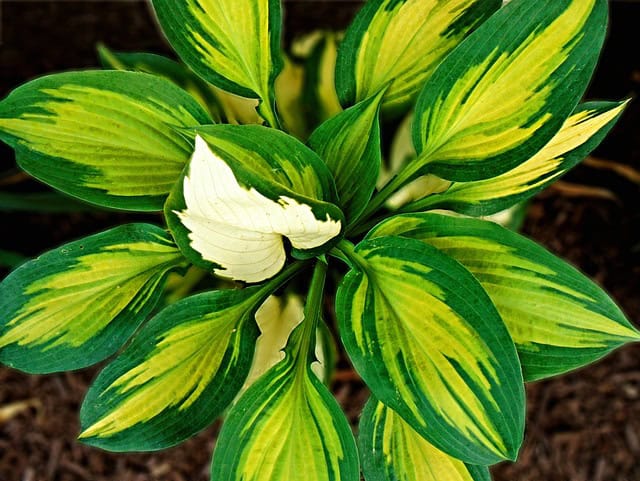
Hostas are shade-loving perennials that are easily planted in July. When planting, it’s best to dig a hole wide enough to accommodate their roots. Position them in well-drained soil and provide ample shade. Hostas generally take a full growing season to establish but will reward you with lush foliage and striking flower spikes the following year. They are excellent for adding greenery to darker spaces in your garden.
Sedum

Sedum, a drought-resistant succulent, can be planted in July. It’s perfect for dry areas where other plants might struggle. For best results, plant sedum about 6 inches apart in well-drained soil and full sun. They require little maintenance once established and will reward you with autumn color. Sedum generally emerges in spring and stays vibrant to early winter, showcasing their stunning blooms.
Ornamental Grasses
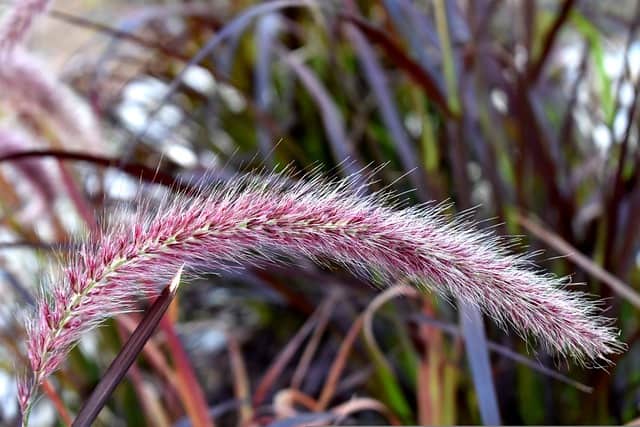
Ornamental grasses, such as feather reed grass, are an excellent choice for July planting. They thrive in sunny locations and adapt well to various soil types. Divide and plant them around the height you desire, allowing for adequate spacing for growth. Ornamental grasses can reach heights of 2-6 feet, and once established, they offer texture and movement to the landscape. Most types bloom in late summer or fall.
Hydrangeas

Hydrangeas are versatile shrubs that can add a pop of color to your landscape. Ideally, plant them in well-drained soil with slightly acidic to neutral pH. They prefer partial sun and moist soil. Hydrangeas can be planted in July, but be vigilant about watering to help them establish roots quickly. They typically bloom in summer, with some varieties offering blooms in shades of blue, pink, and white.
Coneflowers
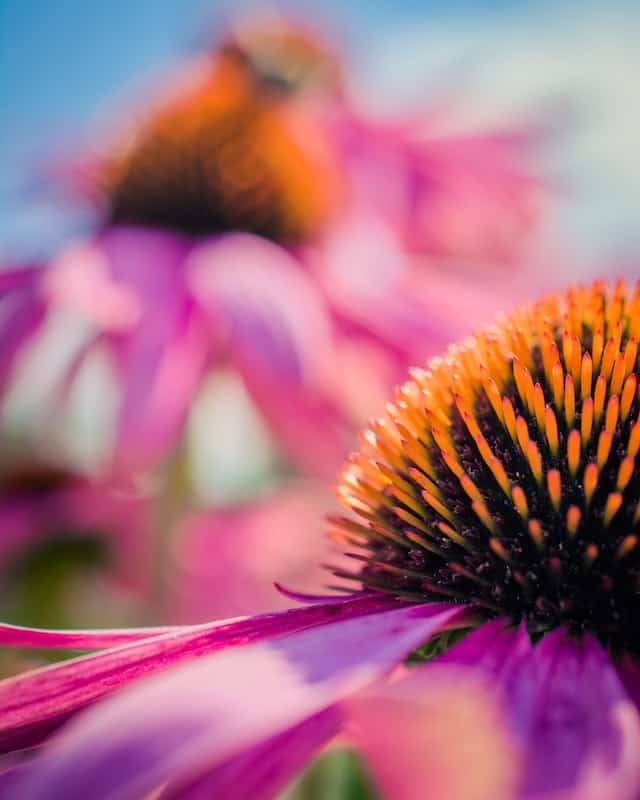
Coneflowers are hardy perennial plants that are excellent for adding color to your garden. Plant them in July about 2 feet apart in well-drained soil with plenty of sunlight. They thrive in various soil types and are drought-tolerant once established, typically blooming from midsummer to fall. Their vibrant purple flowers draw pollinators, adding ecological value to your landscape.
Black-Eyed Susans
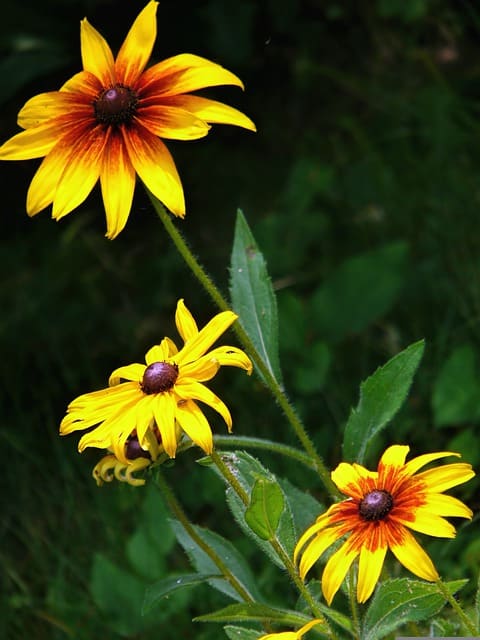
Planting Black-eyed Susans in July will ensure your garden is alive with color in the late summer and fall. They thrive in full sun and well-drained soil. Plant them about 12 inches apart to ensure their growth doesn’t become too crowded. Typically, these flowers bloom beautifully from mid-summer to early fall, and they are also great for attracting butterflies and other beneficial insects.
Lilies

Lily bulbs can be planted in July for a stunning floral show. Select spots with full sun and well-drained soil. Plant the bulbs about 4-6 inches deep and 12 inches apart. Lilies will flourish in late summer, providing a striking array of colors and fragrances. They are relatively low-maintenance, requiring basic care for proper growth and flowering.
Tree Peonies
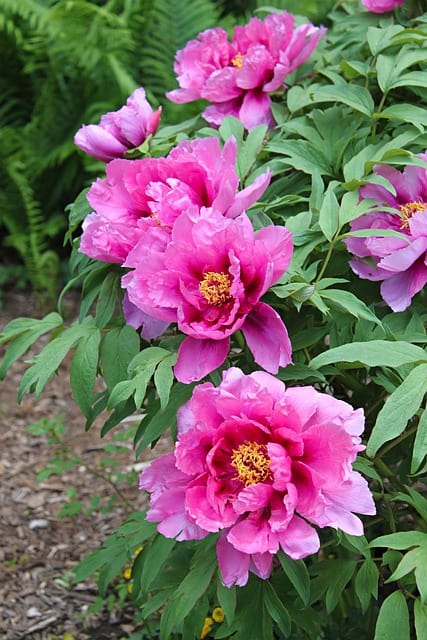
Tree peonies can be planted in July; although they take time to establish, they reward gardeners with stunning blooms. Plant them in well-drained soil enriched with organic matter and position them in full sun to partial shade. Tree peonies typically bloom in spring; however, it may take a year or two before you see their first blooms, but the large, fragrant flowers are well worth the wait!
Lavender

Lavender is a delightful addition to any landscape with its peaceful scent and beautiful purple flowers. It prefers sandy, well-drained soils and full sun. When planting lavender in July, ensure enough space for each plant, about 12-24 inches apart. It can be harvested for drying and crafts, and it typically blooms from late spring to late summer. Lavender is also excellent for attracting pollinators!



